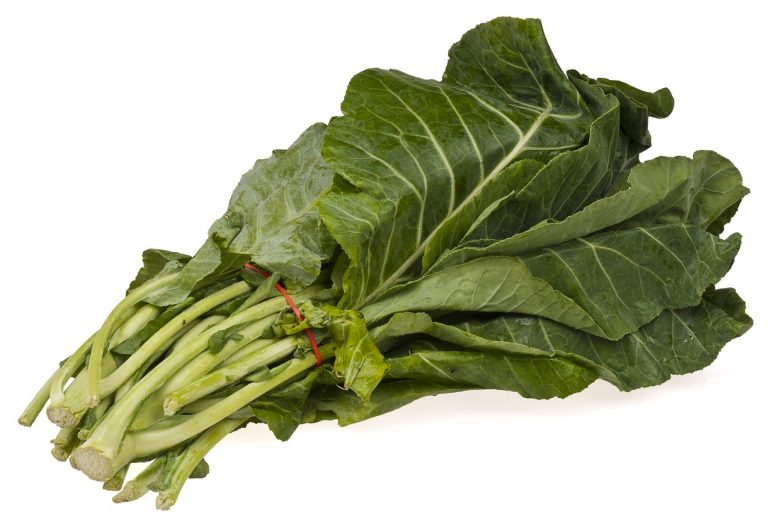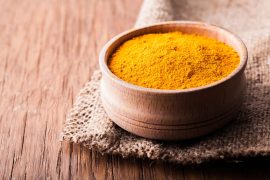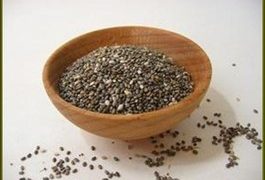The good news is you can grow collard greens in northern climates too, as they are a cool season crop. Collards are one of several tasty winter-season vegetables , and some suggest a touch of frost actually improves their flavor. If you are planting a garden and would enjoy a versatile vegetable packed with life-giving nutrients, consider growing collard greens.
The History and Use of Collard Greens
Collard greens (Brassica oleracea acephala) are considered to be a descendent of loose-leafed wild cabbage found in in many parts of Europe more than 2,000 years ago. Nicknamed collards, these dark leafy greens are part of the cruciferous vegetable family. Some of the close relatives of collards are:
Collards are a hardy biennial plant, usually grown as an annual. Collards are enjoyed worldwide. They are considered to be a dietary staple in places such as the southern U.S., countries such as Brazil, Kenya, Portugal and Tanzania, as well as the Kashmir Valley region of Asia.1
When to Plant Collard Greens
Because collard greens are a cool-season vegetable, if you live in the South, you can plant seeds directly in late summer to early fall for a winter harvest. If you reside in a northern climate, you’ll want to plant collards a few weeks earlier for a fall or winter harvest. Due to their frost tolerance, if you live in the U.S., you can harvest collards as a late-season crop in U.S. Department of Agriculture plant hardiness zones 6 and below.2
If you prefer a summer harvest, you’ll need to plant collards in the early spring, as soon as the ground can be worked, and plan to keep them well watered. Collard greens require adequate moisture to thrive in summer heat. As a member of the cabbage family, collards growing in heat may bolt, although they are more tolerant of heat than cabbage.
Another option is to plant seeds indoors in spring, about four to six weeks before your area’s last frost. Place the transplants in your garden when they are about 3 to 4 inches tall. Due to their hardiness, you can move them outdoors as early as three to four weeks before the last spring frost. In most U.S. growing zones, you can enjoy two collard harvests by planting one crop in early spring and another one in late summer.
VIDEO
How to Grow Collard Greens
The ideal growing environment3 ,4 ,5
Plant the seeds one-fourth to one-half inch deep and 3 inches apart. To avoid crowding, rows of collards should be spaced 2 to 3 feet apart. The plants will get large and need ample room to grow. To ensure an abundant crop, you’ll want to plant two or three collard plants per family member, and even more if you eat a lot of greens or are inclined to share your bounty with friends or neighbors. Once established and a few true leaves appear, thin collards to about 12 inches apart.
Thinned seedlings make a tasty addition to salads or coleslaw, or they can be planted elsewhere in your garden. To ensure tender leaves, water collard plants regularly. Under watering can cause the greens to become stringy. Side dress plants with compost at midseason.
If you have limited space, you can grow collards in containers. A 10-inch pot will accommodate a single collard plant. If you have larger containers, set the plants on 18- to 24-inch centers. Before adding collards to your garden, give some thought to the other plants you will be growing. Collards will either thrive or underperform depending on the companion plants you place around them. For best results:6
Plant collards near: peppers, southern peas and tomatoesNever plant collards near: celery, potatoes or yams
How to Address Collard Pests
If you have experience growing cabbage or another type of plant from the cabbage family, you are likely familiar with some of the pests that may attack your collard plants. Fortunately, their tough leaves afford some degree of protection. The main collard pests are:7 ,8
Aphids gather wherever there is new succulent growth, on each side of the leavesCabbage loopers are inclined to eat holes in collard leaves and are preceded by small yellow and white mothsCutworms. Clear away all dead grass, leaves and weeds that provide hiding places for these pestsFlea beetles are small darkly colored insects that are noticeable for the small holes and pitting they create in collard leavesImported cabbage worms. Larvae feed on collard leaves; left unchecked they can reduce mature plants to stems and large veins
Because collard diseases tend to build up in the soil, do not plant them in the same spot every year. As a general rule, it is best to rotate all cruciferous vegetables. If your collards have been prone to disease or pest problems during the growing season, you most definitely do not want to leave plants standing through the winter. Common diseases that plague collard plants include cabbage yellows, black leg, black rot and clubroot.
Collard Greens Nutrition Facts
Like all dark leafy greens, collards provide many of the nutrients you need as part of a healthy diet.9
30 calories
Zero cholesterol, fat or sugar
6 grams of carbohydrate, including 4 grams of fiber
2 grams of protein
While you’ll want to confirm with your doctor, in general, regularly consuming large amounts of collard greens may not be advisable if you:
Have a thyroid problem : Collards contain goitrogens, which have been shown to interfere with iodine absorption when consumed in large amounts10
Suffer from oxalate kidney stones: Intake of high-oxalate foods, particularly beet greens, spinach and Swiss chard, and collards to a lesser degree, is thought to be a causative factor in the development of kidney stones11
Take anticoagulants (blood thinners) such as warfarin: The high amount of vitamin K found in collards may be concerning because vitamin K plays a major role in blood clotting12
Health Benefits of Collard Greens
According to the George Mateljan Foundation, a nonprofit foundation whose mission is to help you eat and cook for optimal health, eating collard greens can help you lower your cholesterol and maintain healthy cholesterol levels:13
“In a recent study, steamed collard greens outshined steamed kale, mustard greens, broccoli, Brussels sprouts and cabbage in terms of its ability to bind bile acids in the digestive tract. When this bile-acid binding takes place, it is easier for the bile acids to be excreted from the body.
Since bile acids are made from cholesterol, the net impact of this bile-acid binding is a lowering of the body’s cholesterol level. It’s worth noting that steamed collards show much greater bile-acid binding ability than raw collards.”
Collards also pack a wealth of cancer-fighting glucosinolates that support healthy detoxification and fight inflammation. Notably, collards are rich in phytonutrients such as di-indolyl-methane and sulforaphane, which have been shown to both inhibit cancer cell growth and kill cancer cells, especially with respect to breast, cervical, colon, prostate and ovarian cancer.14
The presence of antioxidants like vitamins A, C and E, as well as caffeic acid, ferulic acid, kaempferol and quercetin, help your body ward off chronic oxidative stress. Oxidative stress has been associated with chronic disease and premature aging. The Foundation also noted that eating collard greens supports healthy digestion, promotes cardiovascular health and reduces inflammation .15
If the many health benefits of collards have whet your appetite to investigate other healthy greens, you may be interested in revisiting my previous article 6 Vegetables to Love That Arent Kale .
The Most Popular Collard Varieties
Collards are distinguished as either loose-leaf or loose-head. Traditional varieties like Georgia and Vates produce loose, open plants. Newer hybrids mature faster and are more compact plants with a loose head. For a steady supply of leaves throughout the growing season, I suggest you plant a loose-leaf variety. If you would be more comfortable harvesting the whole plant at once, choose a loose-head variety. The most common varieties of collard greens (and their estimated time to maturity) are:
Varieties & Growing Times
Description
Blue Max (68 to 75 days):Savoyed leaves; plants are vigorous and uniform for heavy yields
Champion (60 to 80 days):A Vates hybrid with cabbage-like leaves; ideal for smaller gardens
Flash (55 days): Smallish plants, but very vigorous growers with smooth, sweet leaves
Georgia (70 to 80 days):Large, heat-tolerant plants that are slow to bolt and produce tender, waxy leaves
Green Glaze (75 days):Glossy, dark green leaves; less prone to damage by caterpillars
Vates (55 to 80 days):Compact plant with very smooth leaves
What You Need to Know About Harvesting Collard Greens
All green parts of collard plants are edible, and you are free to pick the leaves at any time during the growing season. Collards can grow up to 3 feet tall, producing rosettes of large waxy leaves supported by sturdy stems. Below is everything you need to know about harvesting collard greens:16 ,17
The maturity of collards varies widely, but plan for around 60 to 80 days depending on whether you direct seed or use transplants
Cut leaves on a cut-and-come-again schedule as soon as plants are about 1 foot tall
Cut young, tender collard leaves starting at the bottom up; take care to harvest collards before the leaves get old and tough
Harvest summer collard greens before bolting can occur
Store your harvested collard greens in the refrigerator for up to a week; you can also can, dry or freeze collards
Even though frost lends collards a sweeter taste, you’ll risk losing your plants if the temperatures stay below freezing for long periods. Unless you are overwintering, its best to complete your fall/winter harvest before the first hard freeze.
That said, if you want to continue harvesting collards during cold weather, you’ll need to protect the plants with a cold frame or hoop house. (For additional ideas, check out my tips for extending your growing season .) Because collards are a biennial, if you plan to save seeds, your plants will need to be overwintered.
The Importance of Buying Organic Collards
When shopping for collard greens, be aware of the potential pesticide risks of buying conventional. Although they are not listed on the Environmental Working Group’s 2017 “Dirty Dozen” list,18 19
The What’s on My Food? website20 21
How to Eat Collard Greens
Collard greens are tasty in a variety of forms. They can be boiled, braised and sautéed. There are literally hundreds of steamed collard green recipes. Collards can sit alongside almost anything else you put on your plate, from scrambled eggs to wild Alaskan salmon. You can add collards to all manner of soups and stir-fry dishes.
Young, tender collard leaves can be tossed in salads. Light cooking increases the bioavailability of collard greens healthy compounds. I suggest you steam them just until they become soft and are still bright green.
At the simplest level, add a little salt and pepper to steamed collards. You can drizzle on olive oil for the added benefit of some healthy fat. A bit of balsamic vinegar will add some zing. Whatever you do, do not overcook collards, or you will lose many of their nutrients. If you are looking for a quick way to prepare your collards, check out my favorite 5-Minute Collard Greens recipe . No matter how you serve it, collard greens are a nutritious vegetable I highly recommend you not only consider eating, but also growing in your garden.








